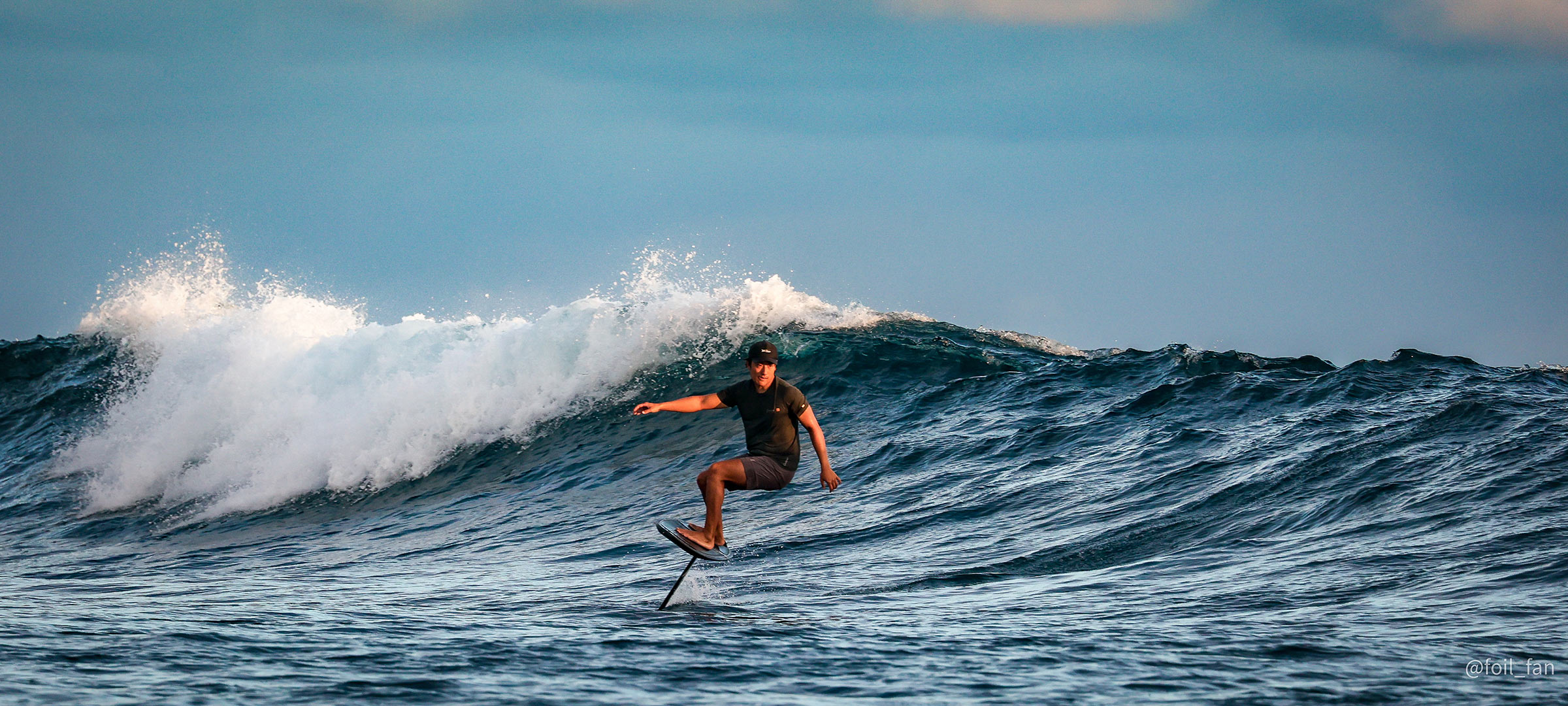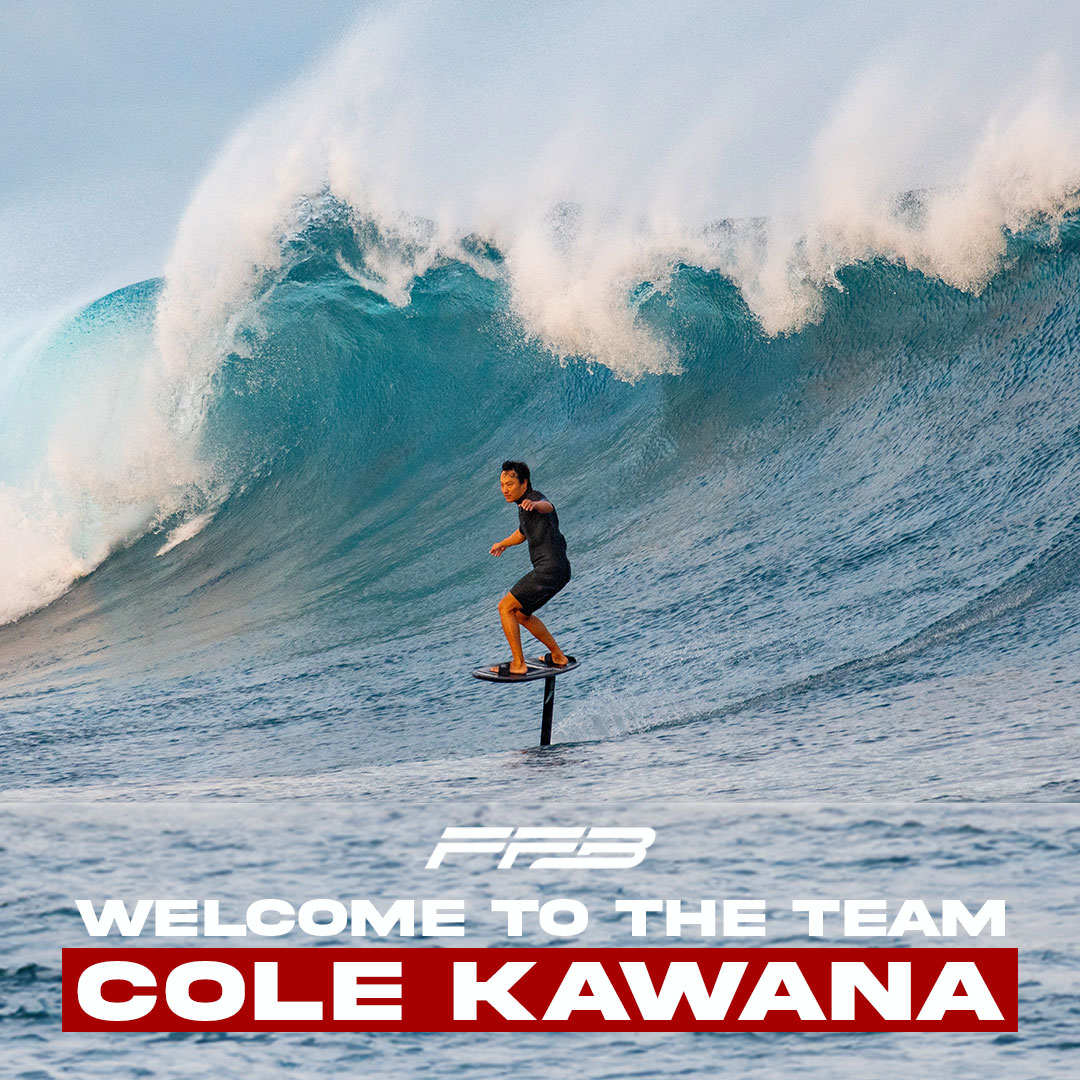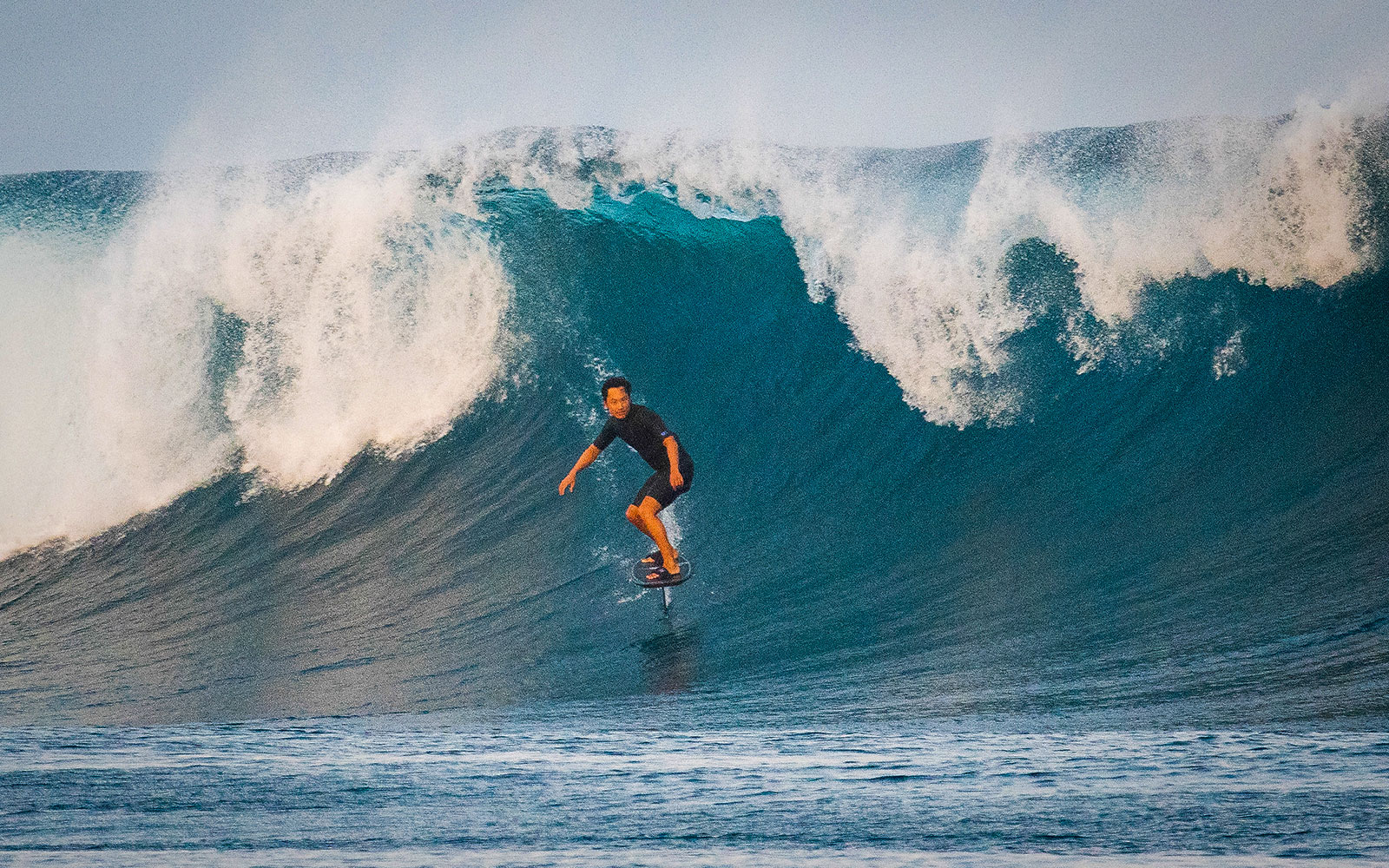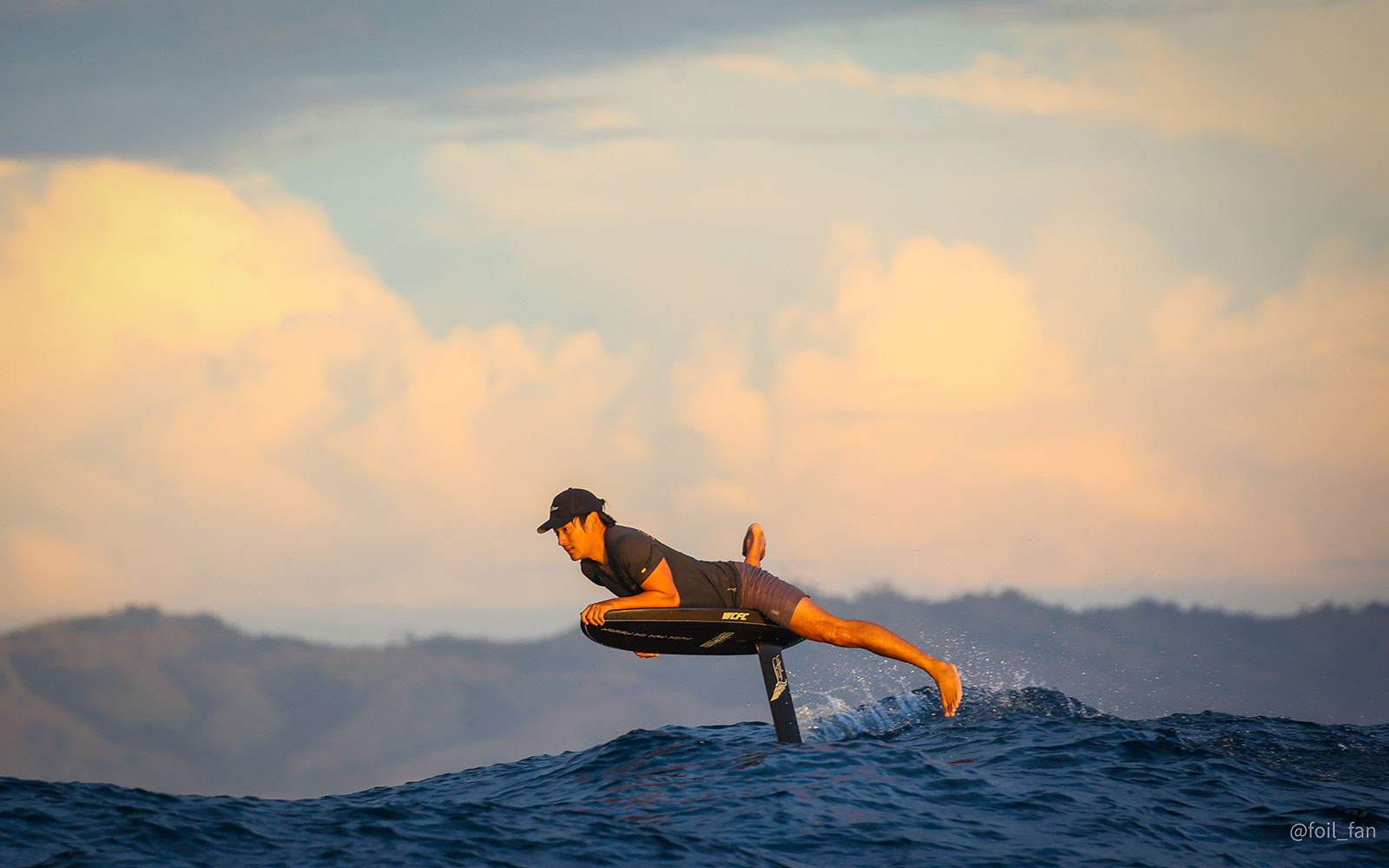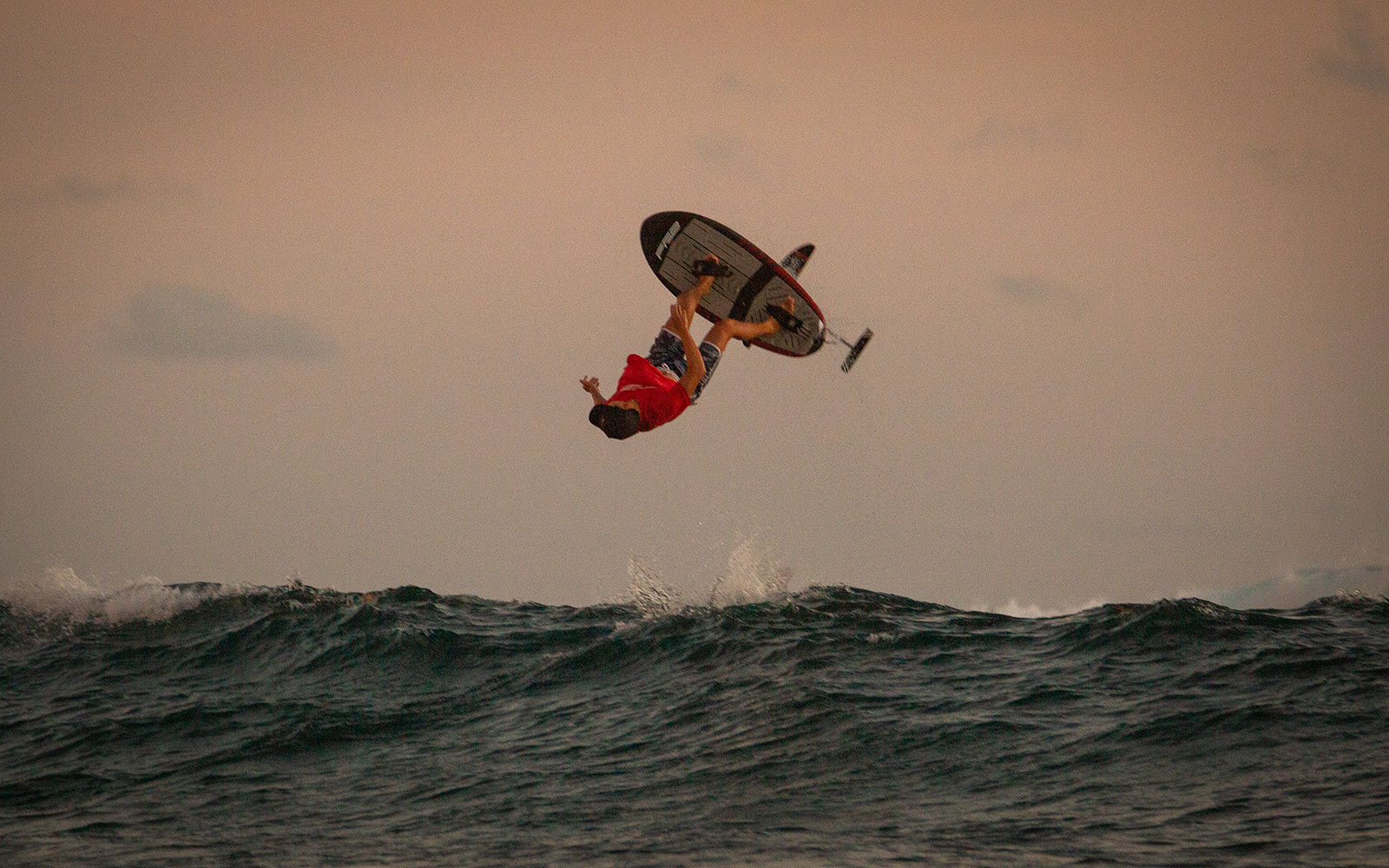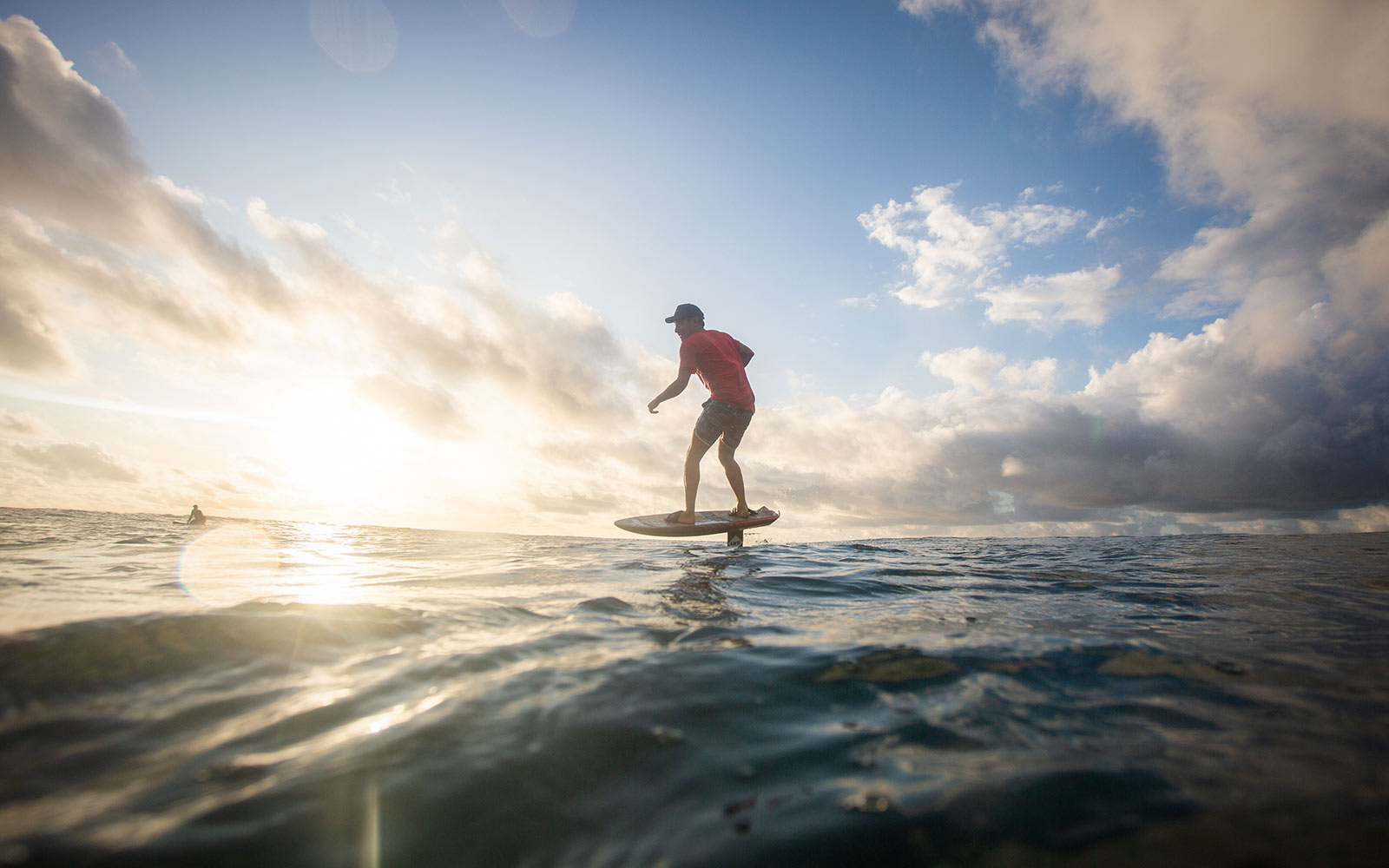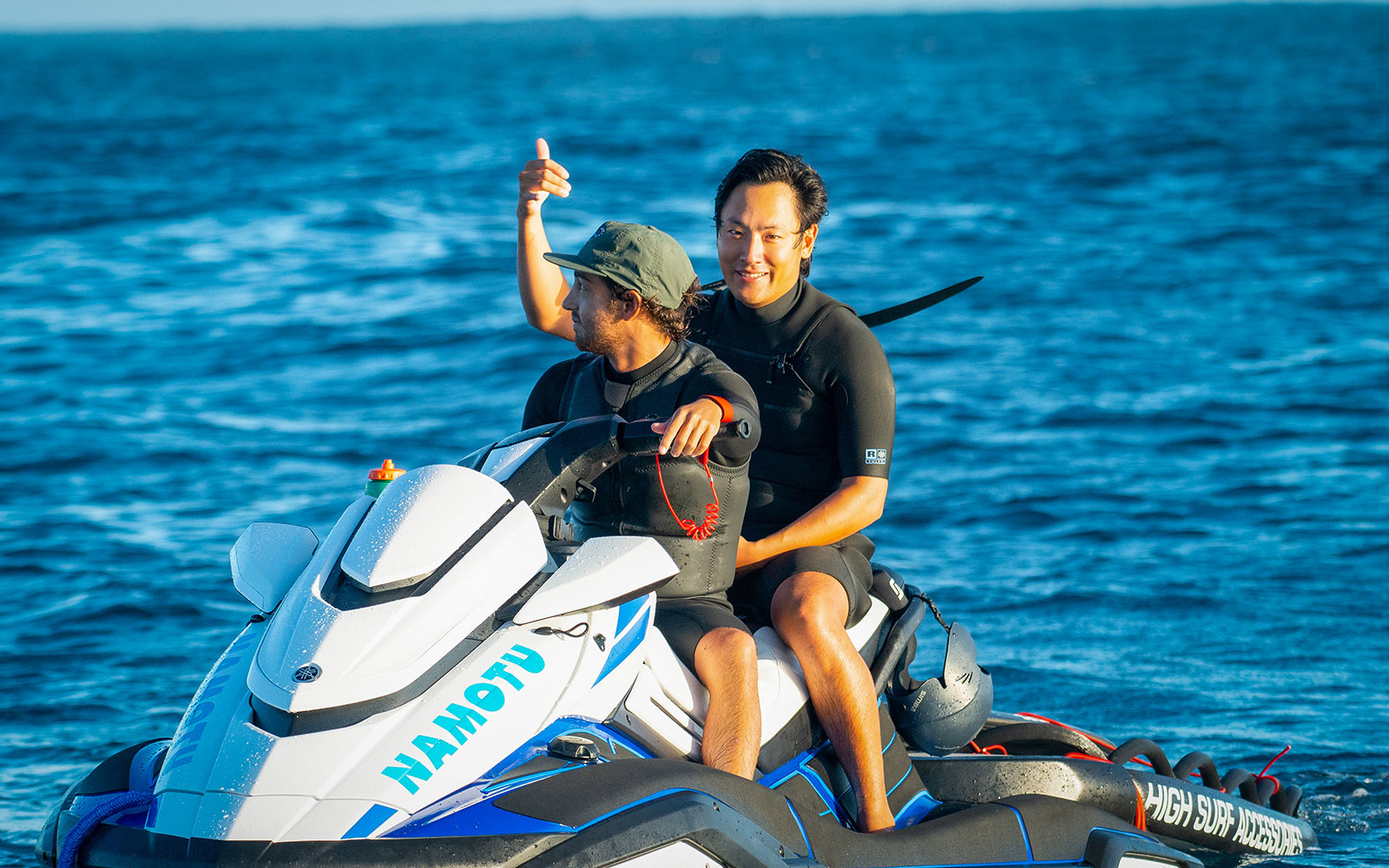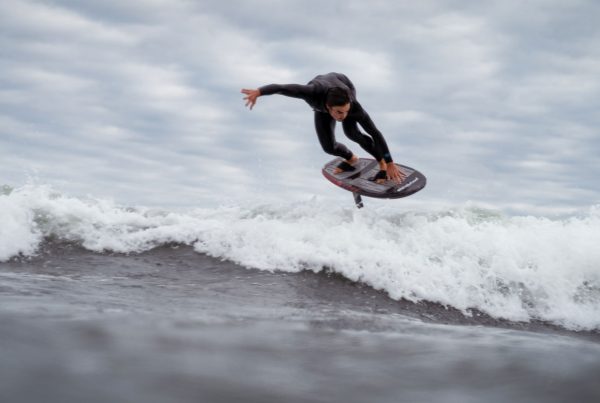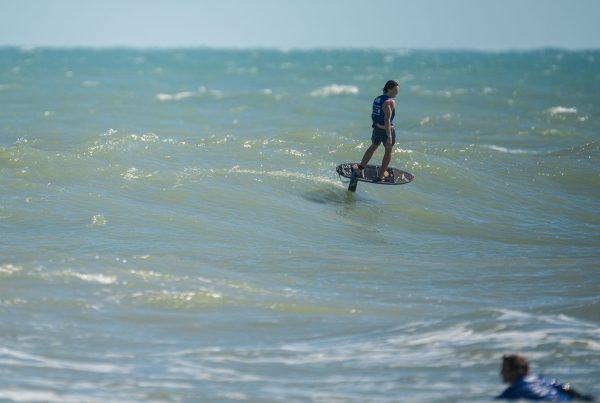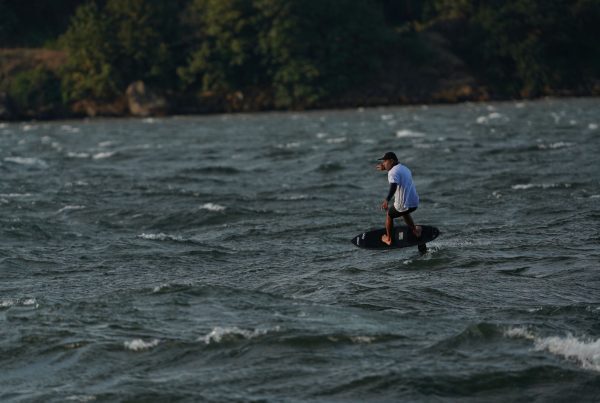FFB are excited to announce the latest member of our Pro team, Cole Kawana! Cole can be found hopping all over the globe in his constant pursuit of foiling perfection. Below, our founder Chris chats with Cole about all things foil, travel and even AI!
CHRIS SAYER:
Cole, you have been riding FFB since day 1! I remember meeting you in my garage / shaping bay in San Clemente at least 4 or 5 years ago… I think you picked up a Corey Colapinto Pro board and a Techno? It’s been quite a ride brother and I personally, and now FFB as a Company, really appreciate all the support over the years! Congratulations on the promotion from Ambassador to Team Rider! I always tell our young ambassadors there is a path towards making it to the Team Rider Status and you are the perfect example of what hard work and dedication to the sport is all about. I have always appreciated your detailed feedback and the detailed technical analysis you always provide us with on your gear. Can you fill us in on your education and background and how you are able to give such a rad analysis of your equipment?
COLE KAWANA:
Yeah Chris! So stoked to officially join the Freedom Team. I first picked up foiling while living in New Zealand during a study abroad program in college, but I was on an ancient kit and in dumpy beach break haha. So other than a bit of kite foiling, I didn’t truly get my surf foil journey started until we met, and I picked up that OG Corey Colapinto board you had hand shaped in your garage. I think it was an early version of the techno, maybe 3’10” because going small was still all the rage in 2019.
I was essentially obsessed with foiling from my first glide. And once I unlocked the 2 for 1 it was all over – have pretty much structured my life around the sport at this point. The ability to hunt down repeatable sections in foiling and the overall abundance of waves really suited my incremental learning style. My background is in mechanical engineering; ended up doing my thesis on hydrofoil design for anti-breach characteristics of stabilizing wings. I think this methodical approach to breaking things down to first principles and then distilling which board feature correlates with which ride feel is such an addicting process to be a part of. And getting to see that feedback reflected in the boards we all get to ride is so gratifying – thanks so much to the whole Freedom Fam. The ride has been insane so far and I’m pumped for where the sport of foiling is taking us.
CHRIS SAYER:
I know you have a really cool company that works with AI and have even been featured on the television show “Sunday Morning”. AI and Chat GPT seems to be redefining the Tech industry and is a significant game changer across many industries. I personally have spent some time conversing with Chat about foil sections and Foilboard companies… It’s truly amazing technology. From your background and understanding, how do you see AI helping to progress foils and board developments down the road?
COLE KAWANA:
That’s a fun question to think about, I remember reading (I think a Stab mag?) an article recently where the author somewhat jokingly asked an AI model to “shape” a surfboard to a somewhat disastrous end. Of course, the methodology was a bit dodgy. The company I work for developed a conversational video AI platform with the whole goal is using AI tools to amplify real human voices. It’s somewhat unique in the space because rather than being a company of engineers making something cool without regard to what amount of human life it supplants, we’re all about using these powerful tools to preserve the individual’s voice for future generations – recording conversation now so our kids can learn from our most important people by talking with them.
I kinda look at AI in the sport of foiling the same way… could you use an AI to help you pick curves and profiles based on certain design characteristics you ask it? Sure, now I don’t know if it would be economical to make something at this point that helps use any more than the existing design programs. But no matter where the technology aspect goes, at the end of the day, the most important thing is how it feels to the rider. I think the best way to use these and any new technologies in our sport is to amplify the ‘voice’ of the artist making our crafts. The soul and passion that the shaper puts into the curves – historically by hand, currently by CAD, and perhaps future by model training data – is still the magic spark that makes certain shapes stand above all others. So even in the future when an AI model can take your height and weight, skill level, surf conditions, type of foiling, foil of choice, and location on earth into perspective and spit out a custom board in CAD, it’ll still be the shaper’s previous experience and glassers craft that gets you a refined board you love.
CHRIS SAYER:
Cole, I feel like I never know where in the world you are living haha… Your downwinding in LA, then I see you towing into some outer reefs in Hawaii and now you just recently returned from Namotu… You’re all over the place buddy. Where do you consider home and more importantly of those 3 places where do you consider to be the best for foiling?
COLE KAWANA:
Haha yeah, I’m beyond lucky to get to foil in so many incredible places. The whole work-from-home thing has really allowed me to structure my play time around foiling. So grateful to be in a place and time in life where the attachments are minimal but the options are vast. I’m born and raised in Malibu, CA – that’s where the ‘bu’ in @bu_foil my insta handle comes from. And although LA doesn’t have the best prone foiling due to our tides and rocky bottom point breaks, it was the perfect place to learn to foil when I did – and it turns out our coastline is an incredible place to downwind. The longest, cleanest, and most lined up downwind sup runs I’ve ever experienced have been just off the coast of Malibu, there’s seriously potential to put up some 50+ mile runs on a good day. For the majority of my foiling life, I have lived in Oahu, we have lots of extended/distant family that live all over Hawaii and I put a solid amount of time here growing up, but living in such a wave and condition abundant place is unbelievable. It has to be the best place on earth for foiling if you enjoy every single aspect of the sport, I’ve lost count but I’m definitely already past 75 unique spots foiled and counting. Namotu might be the real happiest place on earth and it’s also where I first saw and tried a hydrofoil. I mean, modern foiling really exploded from that one Kai Lenny clip at Namotu lefts. And I’ve been fortunate to visit that tiny island as both a guest and a foiling lifeguard/instructor before. Although it is tide dependent, foiling in Fiji is always a ‘pinch yourself’ is this real feeling. Picturesque is an understatement.
CHRIS SAYER:
You do seem to do a fair amount of big wave tow foiling. Any plans to go towards the XXL realm? I know we have discussed moving towards some big wave-specific tow boards. Fill the readers in on why having some weight on big wave tow boards is so critical?
COLE KAWANA:
Like the seasons, my preference for my favorite type of foiling is constantly oscillating between downwind and big wave towing. I’ve been fortunate to have been taught by some serious big wave hammers out on Oahu. So far, the biggest waves I’ve ever experienced were probably during the Eddie Swell last year, I won’t even try to estimate the size it was out there but suffice it to say once it gets big enough you can’t really measure the height accurately with your eyes. But you can for sure feel it in your chest – the heart pounding and the air vibrating. The energy and focus during a really big day are unmatched. Yeah, the weighted boards are super interesting. I’ve ridden quite a few, and I really like the medium-weight tow foil boards that are 8-10 lbs. The weight just settles down the craziness in the ride and lets you focus on the macro rather than managing the micro bumps, chop, and wind up the face of the wave. If the weight is balanced right, you can retain your precise control in roll by settling the pitch and yaw – it makes the whole rig ride like a Cadillac. Pretty cool when the weight is perfect for the conditions, it just makes the wave feel smaller and more in control.
I got lucky to score a few pre-dawn tow sessions at Cloudbreak as well during a fairly sizable advertised swell as well. I’m typically pretty cautious when it gets bigger out there so for right now, I don’t have any immediate future plans other than continuing to improve my safety pickup technique and just logging more hours on the ski. That being said if the opportunity did present itself to go huge one day, I would be very amped.
CHRIS SAYER:
Lastly Cole I know yourself, Dane and Brady are entering the M2O race towards the end of July. How’s your new prototype Dagger we designed working out? What kind of training are you doing to prepare for the race and is there any strategy from a technical standpoint that you are willing to share with us as you mentally prepare for the 32-mile Ka’iwi Channel Crossing?
COLE KAWANA:
The proto Dagger is the best downwind sup I’ve ever tried, and I’ve tried at least 20 different makes, models, and sizes. We went for a 7’2” 18” but I think it really ended up just under 18”, maybe 17.75”. There are a couple of little secrets in there to shave weight. But a lot of the design feature changes were just small refinements of the stock boards. Slightly sharpened tail, a subtle inflection in the curve, touch more rocker here and there. But it is still a dagger and rides much like the other daggers I’ve used – just with a bit of racing fuel. I’m experimenting also with lighter leashes with less stretch and also some strategic pads to help for the likely inevitable paddle section at the end. Got the hydration and food sorted with a low-bounce brand backpack. Have also been practicing some mid-foil stretches, trying to figure out how to roll the muscles out with the paddle. All these things are really little but hopefully end up adding to just make it easier. Foiling wise I’m just trying to send as much as possible in as variable conditions as I can be that 30 miles in middling LA conditions or 3 gnarly high energy miles on Oahu, whatever I can get to. There’s only so much you can do until you get to the start, and I’ve heard that the energy out in the channel can be different every time. So, on the day of my main goal is to just soak it in and be the proverbial tortoise. Really amped to give the crossing a crack – have had an M2O poster hanging in my house since I was a little kid, but I never imagined participating in it!


